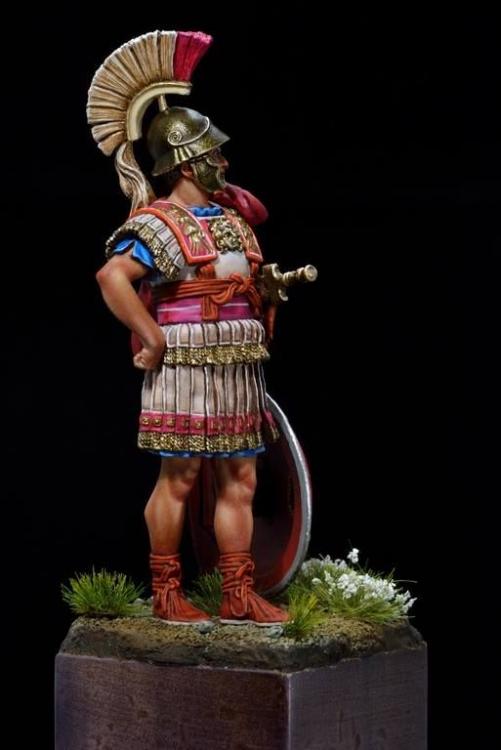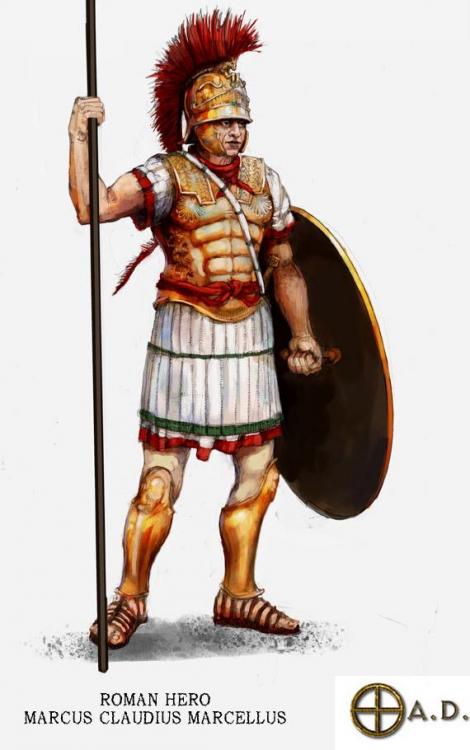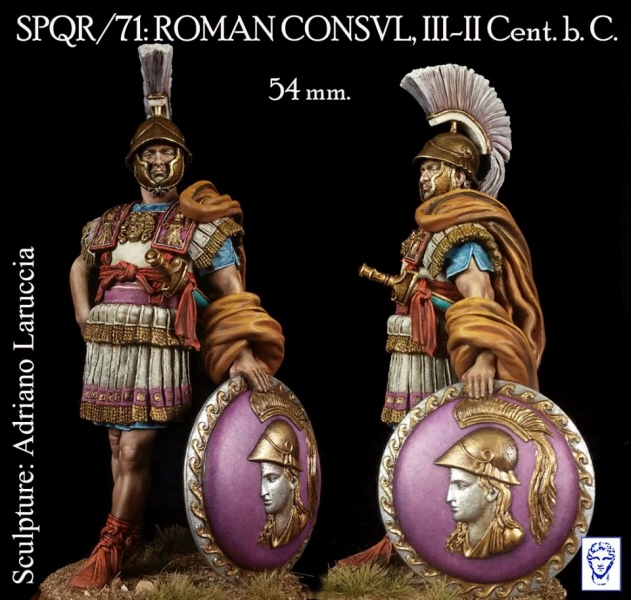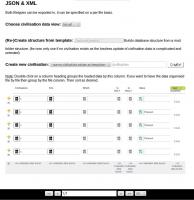Search the Community
Showing results for tags 'concept'.
-
The Roman helmet in mostly of representation or artwork are a kind of Italic ( Apulo-Corinthian) In the game all our Roman Heroes are same, with little Attic variation.
- 19 replies
-
- 1
-

-
I'm trying to set up a database for all civilisations (at least for mods as there chaos is great king). [This post will be updated.] Where to find: You see an old rusty gate with foreign inscripts. Pass through it. (the UI is not really functional yet, as no data exists) Terminology: - Leaf node: Mostly text. The final value. ----Civilisation----civilisation_file.xml:<root_element> <element attribute="leaf node"> leaf node.1 </element> ...<root_element>Functionality & Status:- Generate a civilisation or mod structure from an existing template, e.g. an existing civilisation or from a mod folder recursively (such that it has not to be created from scratch). - There is no fixed export filetype. Both JSON and XML can be output (to put into mods/<mod>/ folder). untested - The export target fileformat can be set on a per file basis. And changed even for already existing civilisation data. - Add new civilisation. - Rename civilisation, - Merge civilisations. - Add new File to civilization. - Rename file within all civilisations at the same time. - Move elements from one file to another. - Add new leaf element. (via xpath) - Insert/modify leaf node values. (good for researchers that don't have git or repository access) - Version control. not yet - Sorting (after Civ, File, XPath, or Leaf Value), - Grouping (after Civ, File, XPath, or Leaf Value), - Filtering (dynamic), - Option to apply changes to all occurrences in the whole database. <-- That's powerful, but also very dangerous if it goes wrong. - Option to modify equal values through out the currently filtered data rows.<-- That's quite useful as this way you can 1) filter the rows you wish to change. e.g. all occurrences of mesh_and_animation.v1.dae to mesh_and_animation.v2.dae within a certain civilisation.. - Updating the database civilisation structure by reading a template folder recursively when data already exists, creates new leaf elements automatically and shows in the civs that new elemets now have to/can be added/ are still empty and need to be filled. buggy Example: A new required element has been added, e.g. timetag/timerange. Now all civilisation data that not has this element yet, will have this added automatically (with dummy data, that can be changed thereafter). Targets: The target is researchers. Hopefully this later can be combined with a mercurial setup. I just have to add a button to allow researchers to commit their data.
- 33 replies
-
- 2
-

-
Minimap. I want crearte dome Basic buttons, in monochromatic like this. Easy to produce. Easy to recognize Elegant("less is more", concept) Tiny size even more than our actual most tiny buttons.
-
- concept
- minimalistic
-
(and 2 more)
Tagged with:
-
-
References & Concept Art The first task is to find pictures of existing African buildings, we gathered hundreds of pictures of Northern African architecture. However, here we met our first challenge: were not making a set just for the Malians, were having them share their set with another African civ. So we had to make a generic African set, which is not something that exists. Time for concept art! We started with the market as our first building. The reason for this was two-folded. First of all, the market is a building that changes in all ages, so we can use its style and texture as a base for the rest of the buildings. Secondly, its a big building with a lot of variety, which helps us define that proper style. Basic Blocks Time to turn this pencil & paper artwork into digital models. We jumped into our modelling software and came up with the following models: However, we made a big mistake, which we didnt notice right away. All buildings in Age of Empires II have their characteristic shapes and sizes. Although the market was roughly following the proportions of the existing markets, it wasnt close enough, and it felt like the buildings stood out too much. Back to the drawing boards, where we analyzed the existing sets to turn all buildings into basic blocks. Playing with LEGO as it were. Source:http://www.forgottenempires.net/age-of-empires-ii-hd-dev-blog-4-african-architecture Rendering & post-processing Now, what was the reason we got the market to fit in with the other buildings in the end? Once again, two important reasons. The first one is because of the way Ensemble Studios created their buildings. In the 90s, 3D modelling wasnt as evolved as it is today. Each and every object was created individually, down to every brick in a wall. Which is exactly what we did. The straws in the thatch roofs on the Feudal market are all modeled individually. Which you can also see in this detail of the Imperial market ####### This part isn't important to us. But I included as extra info , or a curiosity. #### Age of Empires II HD Dev Blog #4 African Architecture by Cysion | Aug 28, 2015 | Age of Empires II, Dev Blog, News | 137 Comments New civilizations also mean new buildings! And we were presented with a big plate of fresh challenges. Looking back at the new architecture sets introduced in Age of Empires II HD: The Forgotten, we knew we had to step up our game. The Italian set was masterfully photoshopped from the Middle Eastern set (with some exceptions) but we wanted to go the extra mile for the African set. Time to brush off our 3D modelling software! References & Concept Art The first task is to find pictures of existing African buildings, we gathered hundreds of pictures of Northern African architecture. However, here we met our first challenge: were not making a set just for the Malians, were having them share their set with another African civ. So we had to make a generic African set, which is not something that exists. Time for concept art! We started with the market as our first building. The reason for this was two-folded. First of all, the market is a building that changes in all ages, so we can use its style and texture as a base for the rest of the buildings. Secondly, its a big building with a lot of variety, which helps us define that proper style. aoe2_african_concept_art_market Basic Blocks Time to turn this pencil & paper artwork into digital models. We jumped into our modelling software and came up with the following models: aoe2_african_first_models_market However, we made a big mistake, which we didnt notice right away. All buildings in Age of Empires II have their characteristic shapes and sizes. Although the market was roughly following the proportions of the existing markets, it wasnt close enough, and it felt like the buildings stood out too much. Back to the drawing boards, where we analyzed the existing sets to turn all buildings into basic blocks. Playing with LEGO as it were. aoe2_african_lego_blocks_market Now we had the basic shapes, we could start modelling again. This time we focused hard on the Feudal Age set. A lot of improvements were made as you can see on the images below. Feudal Market V1 shows the market prior to our block-building analysis and V2 shows the revamped version with proper AoE2 proportions. SvHDV5q However, we werent happy yet. The shape was right, but the building looked a lot more simple than the buildings currently in the game. This was due to two reasons: firstly, African feudal architecture was mainly mud-based, which has functionality over aesthetics, but secondly is because we made it look simple. Its not because its simple, that we cant make it look more special, time to step up our game! So we began experimenting, which eventually led to all the images below. First we tried with some more complicated textures. Then we started to change the shape of the building, which eventually led to V3, which we nicknamed Flintstone-melted potato with a tennis sweatband-style. Needless to say, we ditched that one in the end. aoe2_african_potato_melted_flintstone_market Many iterations later, we ended up with the final Feudal Market, which is the one you will see in the game. aoe2_african_final_model_feudal_market Rendering & post-processing Now, what was the reason we got the market to fit in with the other buildings in the end? Once again, two important reasons. The first one is because of the way Ensemble Studios created their buildings. In the 90s, 3D modelling wasnt as evolved as it is today. Each and every object was created individually, down to every brick in a wall. Which is exactly what we did. The straws in the thatch roofs on the Feudal market are all modeled individually. Which you can also see in this detail of the Imperial market. aoe2_african_imp_market_stages Now comes the most difficult part: weve seen the models in high-quality 32-bit renders this whole time. But for Age of Empires II, they need to be converted to 8-bit images, which means from 24 million colors to just 256! Luckily we can use Photoshop to help us in that conversion so that not too many color-ranges get lost, but its still a shocking difference to see sometimes. Last but not least, we add eye candy! The last step in post-processing to make the buildings fit with the rest of the game. We copy some barrels, items and little plants that can be found on other buildings and paste them on our new models. Its been a month-long journey, and at the time of writing, were not at the end yet, but I would already like to thank our lead artist Jorgito, for all the hard work he has done and still maintaining his sanity over it

.thumb.png.0d87fc71cb8a644c5d862ceabac1e0d5.png)





